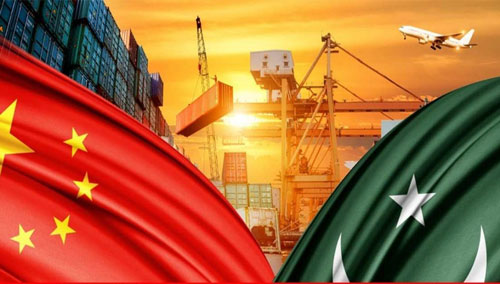The Pakistan–China relationship has grown into one of the most consistent and comprehensive partnerships in the region.
Based on mutual respect, non-interference, and shared development goals, this relationship continues to support Pakistan’s national priorities in the face of evolving global challenges.
As the international order becomes increasingly complex, Pakistan’s cooperation with China remains steady and focused on long-term gains.
Historical Context: The Evolution of a Strong Relationship
The roots of the Pakistan-China relationship go back decades, with both nations building a bond that has weathered numerous global challenges.
This alliance began in the 1950s, but it truly began to flourish in the 1970s when China and Pakistan established formal diplomatic ties.
Over the years, the relationship evolved into one characterized by robust economic, security, and cultural cooperation.
The 2000s saw a significant shift, particularly with the development of the China-Pakistan Economic Corridor (CPEC), a transformative initiative that deepened bilateral engagement.
This relationship has always been anchored in mutual respect for sovereignty, non-interference in each other’s internal affairs, and a shared commitment to peace and development.
Unlike many other international relationships that often come with strings attached—whether in terms of political alignment or economic conditions—the Pakistan-China alliance has consistently stood as a model of cooperation, free from such external pressures.
Why Pakistan Chooses China: A Unique Partnership
The choice of China as Pakistan’s foremost partner is based on a multitude of factors, each contributing to a stronger, more resilient future for Pakistan.
This preference is strategic, driven by the realization that the partnership with China offers a comprehensive set of benefits that no other global relationship can match.
1.Economic Cooperation: CPEC and Beyond
The centerpiece of the Pakistan-China relationship is undoubtedly the China-Pakistan Economic Corridor (CPEC).
This $62 billion initiative is more than just an infrastructure project; it is the cornerstone of Pakistan’s economic future.
CPEC is designed to link Pakistan’s deep-water Gwadar Port with China’s western regions, creating a multi-modal transport corridor for trade and investment.
It includes projects in energy, transport infrastructure, industry, and agriculture, with the goal of addressing Pakistan’s most pressing challenges.
CPEC’s impact is already visible in terms of improved infrastructure and energy security.
Projects like power plants, roads, and railways are directly contributing to Pakistan’s economic growth, while alleviating energy shortages and providing jobs.
The Lahore Orange Line Metro has commenced operation, the Khunjerab Pass is now open year-round, and nuclear power capabilities have expanded with the completion of the K2 and K3 plants and the commencement of C5 construction.
The scale of these projects, along with the long-term nature of China’s investments, positions CPEC as an unprecedented opportunity for Pakistan—one that no other country has offered on such a scale.
China’s financial commitment to CPEC, through both direct investments and loans, surpasses what other global powers have offered Pakistan.
Unlike traditional aid, which often comes with conditions or political demands, China’s investment is grounded in the idea of mutual benefit, ensuring that Pakistan’s interests are always prioritized.
No other country has provided Pakistan with such a comprehensive support system for infrastructure and industrial growth.
Furthermore, the expanded currency swap agreement and establishment of an RMB clearing bank in Pakistan showcases the deepening financial integration between the two nations.
2 Defense and Security: A Pillar of Stability
Pakistan’s national security concerns are a central priority, and the China-Pakistan relationship plays a crucial role in addressing them.
The defense partnership between the two nations is multifaceted, encompassing military technology, joint exercises, and strategic collaboration.
China has long been a reliable supplier of advanced defense equipment, including fighter jets, submarines, and radar systems, helping Pakistan modernize its military capabilities.
The joint military exercises across all service branches: “Warrior” for the armies, “Shaheen” for the air forces, and “Sea Guardian” for the navies, have strengthened operational coordination.
The two countries also cooperate on counterterrorism efforts, with China’s support enhancing Pakistan’s security infrastructure.
In addition, Pakistan and China have worked together to enhance stability in the region, particularly through their joint participation in initiatives like the Shanghai Cooperation Organization (SCO) and the Belt and Road Initiative (BRI).
This defense cooperation is unmatched in scope and reliability.
While other nations may offer security assistance, China’s military support is consistent and non-intrusive, allowing Pakistan to retain control over its defense policies.
This stands in contrast to other global powers that may demand political alignment or impose limitations on military cooperation.
3.Shared Geopolitical Interests: A Partnership for Regional Stability
China and Pakistan share common geopolitical interests, particularly in ensuring regional stability.
Both nations have long supported each other on the global stage, consistently reinforcing their commitment to each other’s sovereignty and security.
Pakistan has stood with China on key issues such as Taiwan, Tibet, and Hong Kong, while China has supported Pakistan in its efforts to counter terrorism and maintain regional peace.
Beyond bilateral concerns, China’s engagement in regional projects, including the BRI, helps Pakistan become an integral part of a wider network of trade routes that enhances connectivity across Asia.
This partnership fosters deeper economic and strategic integration, positioning Pakistan as a central player in regional and global affairs.
Pakistan’s preference for China over other nations lies in this alignment of geopolitical goals.
The consistency and alignment in policy and approach between Pakistan and China make this alliance the most predictable and beneficial option.
Pakistan’s sovereignty and political autonomy are not at risk, as China does not impose any political conditions or attempt to influence Pakistan’s domestic or foreign policies, a factor often present in partnerships with other global powers.

4.Flourishing Cultural China-Pakistan Relations
Cultural bonds have strengthened with sister cities/provinces increasing from 8 to 19 pairs, nearly doubled numbers of Pakistani students in China, and successful cultural initiatives including film collaborations such as “Parwaaz Hai Junoon” screening in Chinese theaters and the China-Pakistan co-production “BaTie Girl” premiering in both countries.
The cultural relationship between the two countries underscores the multidimensional and comprehensive approach of the partnership.
5.Long-Term Strategic Vision: Building a Sustainable Future
One of the defining features of the Pakistan-China partnership is its long-term orientation.
China’s investments in Pakistan are not designed for short-term gain but for long-term, sustainable development.
This aligns perfectly with Pakistan’s own vision for its future—an autonomous, self-sufficient nation with a robust economy and a stable security environment.
CPEC is just one example of how the partnership is grounded in long-term goals.
The development of infrastructure, industry, and energy resources is designed to not only meet Pakistan’s immediate needs but also lay the groundwork for a thriving economy for generations to come.
Pakistan’s choice to partner with China is, therefore, a reflection of its commitment to securing its own future through strategic, sustainable development.
Why Other Alliances Fall Short
While Pakistan could seek to diversify its international relationships, other alliances do not provide the same benefits that its partnership with China offers.
Many potential alliances come with political conditions that limit Pakistan’s freedom of action.
Some nations might offer short-term economic or defense assistance, but they often attach political strings that can restrict Pakistan’s sovereignty and strategic autonomy.
Other global powers may prioritize their own geopolitical interests, often at the expense of Pakistan’s priorities.
These relationships may not align with Pakistan’s long-term vision for economic self-reliance and regional leadership.
In contrast, China’s engagement with Pakistan has always been rooted in respect for Pakistan’s independence and sovereignty.
Moreover, no other country has made the same level of long-term financial and strategic commitments to Pakistan’s development as China has.
The sheer scale of China’s investment in CPEC and other initiatives ensures that Pakistan is not just a passive recipient of aid but an active participant in a shared future of progress.
A Relationship Built for the Future
Pakistan is pursuing a multifaceted approach that maintains its strategic autonomy while advancing national interests.
This means it will continue to deepen economic integration with China’s Belt and Road Initiative through initiatives like the ‘upgraded version’ of CPEC, which aligns the eight major steps for high-quality BRI cooperation with Pakistan’s “5Es” framework.
Expanding cooperation in agriculture, Special Economic Zones, e-commerce, mining, ICT, new energy, and artificial intelligence represents promising avenues for growth.
As traditional global governance structures struggle to address contemporary challenges, this partnership offers Pakistan a path toward sustainable development that respects its sovereignty and unique circumstances.
While other countries may offer transient benefits or temporary assistance, China’s long-term investment in Pakistan ensures that the relationship is one that will continue to yield positive results for generations to come.
In the face of global uncertainties and regional challenges, the Pakistan-China partnership remains the most strategic, sustainable, and forward-looking choice for Pakistan’s future.


















